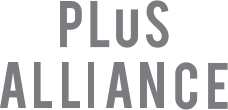Common Applications
| Digitalization of microscope thin tissue section (paraffin/frozen) |
Quantifying biomarkers in tissue section:
|
| Brightfield imaging (RGB images) | Brightfield slide scanning imaging can only be used for histology-stained thin sections (about 4 um) as the technique does not give a lot of contrast on its own. RGB images are generated to reflect the proportion of different chromophores in the samples. |
| Widefield Fluorescent Imaging (Monochromatic channels) | Widefield Fluorescent Slide Scanning allows to use fluorescent markers to highlight targets of interest. Each channel reflects the intensity of the signal fluorophores captured by the monochromatic camera. This slide scanner can separate up to 7 colours and 9 colours if using spectral unmixing and liquid crystal tuneable filters. Please note that a careful selection and optimisation of the fluorophores used must be done prior to multiplex slide scanning (please contact us before buying any reagents). |







